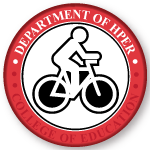Author ORCID Identifier
Document Type
Article
Publication Date
12-15-2018
Publication Title
European Journal of Applied Physiology
Volume
119
First Page
577
Last Page
585
Abstract
Introduction
Childhood obesity is strongly associated with cardiovascular disease (CVD) development. It is necessary to combat unfavorable outcomes of obesity at a young age by utilizing effective interventions, such as exercise.
Purpose
We sought to examine the effects of a jump rope exercise program on CVD risk factors, including body composition, vasoactive substances, inflammation, and vascular function in prehypertensive adolescent girls.
Methods
Forty girls (age 14–16) were recruited and randomly assigned to a jump rope exercise group (EX, n = 20) or control group (CON, n = 20). Body composition, nitrate and nitrite levels, endothelin-1 (ET-1), C-reactive protein (CRP), systolic blood pressure and diastolic blood pressure (SBP, DBP), and arterial stiffness were measured before and after 12 weeks.
Results
There were significant group by time interactions following the 12-week program for body composition (from 33.8 ± 3.6 to 30.2 ± 3.1%), central adiposity (from 86.4 ± 4 to 83.3 ± 5 cm), SBP (from 126 ± 3.3 to 120 ± 2.1 mmHg), and brachial-to-ankle pulse wave velocity (from 8.2 ± 1.0 to 7.4 ± 0.2 m/s). Nitrate/nitrite levels increased (from 54.5 ± 5.1 to 57.2 ± 5.2 µmol) along a reduction in CRP levels (from 0.5 ± 0.4 to 0.2 ± 0.1 mg/L). There were no significant changes in ET-1 (P = 0.22).
Conclusions
These findings indicate that jump rope exercise may be an effective intervention to improve these CVD risk factors in prehypertensive adolescent girls. Jumping rope is an easily accessible exercise modality that may have important health implications for CVD prevention in younger populations.
Recommended Citation
Sung, KD., Pekas, E.J., Scott, S.D. et al. The effects of a 12-week jump rope exercise program on abdominal adiposity, vasoactive substances, inflammation, and vascular function in adolescent girls with prehypertension. Eur J Appl Physiol 119, 577–585 (2019). https://doi.org/10.1007/s00421-018-4051-4


Comments
This version of the article has been accepted for publication, after peer review (when applicable) and is subject to Springer Nature’s AM terms of use, but is not the Version of Record and does not reflect post-acceptance improvements, or any corrections. The Version of Record is available online at: https://doi.org/10.1007/s00421-018-4051-4
Publisher holds a Bespoken License